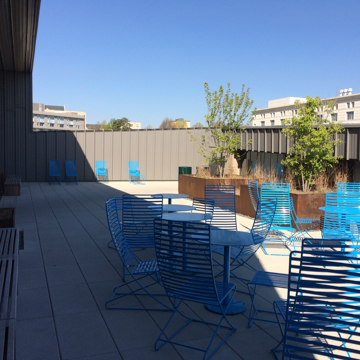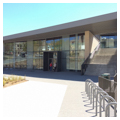A dramatically styled building enlivening a rather dull edge of campus, Champions Hall was designed to offer much-needed general classroom space, along with instructional spaces for math and biological sciences. Negotiating a steep hillside, the main entrance at the high north end offers a broad, shaded stairway along its west edge, asserting a theatrical presence to what might have been a rather ordinary academic building. Outdoor spaces set with café tables encourage students to linger and enjoy the public plaza space, a seemingly generous, even lively gesture in a part of campus given over to otherwise very serious endeavors. Such moves suggest a shift in campus thinking from traditional quad-rangles to a more urban calculation of space.
You are here
Champions Hall
If SAH Archipedia has been useful to you, please consider supporting it.
SAH Archipedia tells the story of the United States through its buildings, landscapes, and cities. This freely available resource empowers the public with authoritative knowledge that deepens their understanding and appreciation of the built environment. But the Society of Architectural Historians, which created SAH Archipedia with University of Virginia Press, needs your support to maintain the high-caliber research, writing, photography, cartography, editing, design, and programming that make SAH Archipedia a trusted online resource available to all who value the history of place, heritage tourism, and learning.





